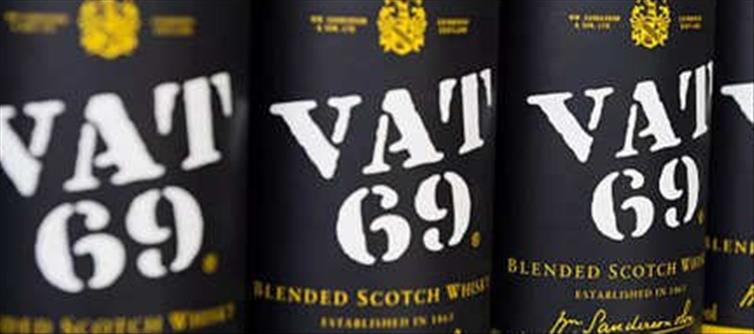
Each bottle of whiskey contains an intriguing tale that is frequently based on craftsmanship, tradition, and history. But few names arouse as much awareness and admiration among whiskey enthusiasts as Vat 69. This well-liked whiskey has been a mainstay in pubs and homes all over the world thanks to its smooth, well-balanced flavor and classic charm. However, have you ever pondered the meaning of the name Vat 69? The origin of the name is intriguing and well ingrained in tradition, despite the enigma that surrounds it.
The Origin of VAT69
William Sanderson, a Scottish whiskey distiller from Leith, invented Vat 69 in 1882. To accomplish his objective of producing the ideal blended whisky, Sanderson began with a bold experiment. His painstaking technique of vatting (blending) 100 distinct barrels of whiskey will ultimately determine the blend's fate. Sanderson asked a group of knowledgeable whiskey tasters to blind sample each cask to guarantee impartiality and quality. Vat 69 was created because they unanimously decided that the 69th VAT was the best of all of them.
The Blend that Stood Out
William Sanderson became well-known for his inventive whiskey mixing techniques, and Vat 69 became his signature blend. However, what was so unique about this whisky? In the past, the blend's main component—the smokey Highland malt from Glen Garioch—was what gave it its unique flavor. The formula changed over time, including almost 40 different grains and malts. The end product is a delicate, harmoniously balanced whiskey with a little vanilla flavor.
It's interesting to see that Vat 69's consistency and recipe have changed throughout time, despite its straightforward yet recognizable flavor. A range of malt and grain whiskies are now used in the mix, which produces a smooth, drinkable flavor that continues to be a favorite among whiskey connoisseurs worldwide.
The Vat 69 Legacy
Sanderson wasn't the end of the whisky's story. In 1935, Distillers Company Limited (DCL), which would subsequently become a part of the multinational beverage conglomerate Diageo, acquired his business, William Sanderson & Son. Vat 69 prospered and remained one of the most well-liked blended whiskies worldwide despite these ownership changes.
The early 20th century was one of the most intriguing periods in Vat 69's history. Ernest Shackleton took Vat 69 whiskey on his Imperial Trans-Antarctic Expedition in 1914, while tensions in europe were rising, and it was said to be used for "medicinal and celebratory purposes." In its legendary history, its voyage around the globe was only one chapter.




 click and follow Indiaherald WhatsApp channel
click and follow Indiaherald WhatsApp channel